#PrPc
Explore tagged Tumblr posts
Text
laugh and yap 😼
288 notes
·
View notes
Text
Enfermedad de Creutzfeldt-Jakob: qué es, síntomas y riesgos
La Enfermedad de Creutzfeldt-Jakob (ECJ) es uno de esos trastornos raros y, lamentablemente, bastante letales que afectan al cerebro. Se trata de una enfermedad degenerativa que avanza rápidamente y, hasta ahora, no tiene cura. Lo más común es que la ECJ aparezca en personas mayores, sobre todo alrededor de los 60 años, y el panorama no suele ser alentador: en el 90% de los casos, los pacientes…
#despertar sabiendo#drogas opiáceas#ECJ#ECJ adquirida#ECJ esporádica#ECJ hereditaria#EEB#EET#encefalopatía espongiforme bovina#encefalopatías espongiformes transmisibles#Enfermedad de Creutzfeldt-Jakob#Espongiformes#GSS#IFF#insomnio familiar fatal#kuru#Papua#prión#PrPc#PrPSc#tribus Fore
0 notes
Text
#Greetings from Ashra Technologies#we are hiring#ashra#ashratechnologies#ashrajobs#ashrahiring#ashrarecruiting#jobs#hiring#recruiting#recruitingpost#pega#prpc#ssa#java#opentowork#jobchange#apply#linkedin#linkedinlearning#linkdinpost#linkedincommunity#linkedinconnections#linkedinarticle#linkedincontent#linkedinlive#linkedinnetworking#linkedindaily#linkedinjobs#linkedingrowth
0 notes
Text




WHYYYYYYY IS SHE SO PRETTTYYYYY
#theres something about this maomao just POISFVHOPQRWIOP G[ECMPC[[PRPC[POCMIOE#The apothecary diaries#GOD I LOVE HER
35 notes
·
View notes
Text
fuckin. remembered that back in the day when I was an Elesa RPer I shipped her with basically everyone. Most of the pairings I found content for I thought were cute as hell, and I was so down for rarepairs or unusual ships.
Except for Clay. For whatever reason Elesa/Clay was like my biggest notp. Do people use the term notp anymore. Anyway. I hated it, is my point.
So I find it really funny that in the scvi dlc Clay is Lacey's dad and the popular theory is that Elesa is her mom. Like that would have pissed 16 year old Bailey off so bad you have no idea.
#ive wanted to write elesa again but i have dupe anxiety and last i checked there was already an elesa in the prpc so.#another reason i dont go on lusamine anymore. besides her just being kinda hard to write sometimes#ANYWAY.#god i dont have a fucking brain today#i need a nap#bailey musings
1 note
·
View note
Text
Character notes:
Looking back, the major theme in Valerie's character that has remained consistent through the years is exploration.
Originally, around 2012 when I designed Val, it was for an RP group (which has since dissolved). While that group had a developed the pokemon interactions and the human interactions separately, there wasn't much going between the two besides the main plot (a war arc). This was soon after Gen 5 was released, when I had fond memories of Pokemon Rangers. I created Valerie as a way to open an avenue for others to make rangers and explore those interactions.
After the group died and dissolved, I left Valerie to rest as a "dead woman".
After the release of Gen 7, my partner and I looked into joining the PRPC on tumblr, with her bringing Mohn. With SuMo "reviving" Anabel using the faller plot, I thought that was a great way to revive Valerie. Again, her theme was exploration. She was to explore a new life as a faller, fresh with no memories. This also opened a path to explore her past, filling holes.
Reviving her again in 2020, I tried again with the exploration theme. I decided not to have her initially know that she was a faller, finding out through a series of events. I also wanted to keep the idea of a dead person with her. Like a specter you see in a mirror instead of your reflection. This has lead to a lot of stumbling, but I feel like this is how Valerie has been able to develop and move. Explore a future shaped by the past.
Sven and Styler both represent these, growing more as symbols of Valerie's development from the start. Sven is a ghost of Valerie's past, grounding her and helping her understand herself. Valerie has scars on her from saving Sven and raising him. Styler has been what propelled Valerie to explore and meet others. The rotom's pranks keep Valerie connected and helps her change. Losing either one feels like a symbolic disconnect from either direction.
Personality wise, from the start, Valerie has always been caring and positive. The ranger occupation, as portrayed in the games, has you facing the worst of humanity and Pokemon, and coming out still caring. I wanted Valerie to represent that still. Her willingness to go back out is her own, part of the identity she clung to when she fell.
Thank you everyone who helped me invest in Valerie as a character. I look forward to developing her future as a free ranger and trainer, with the specter coming up with her.
7 notes
·
View notes
Note
((I caught the Jewelpet anime on TV once and it was sooooooo cuuuuute. I loved the art style, even if we all collectively had a "we are so not the target audience for this (but it's still completely adorable and lovable)" feeling, fff. There was a lot of drama and running to embrace a giant teddy bear???? I don't know, but it's such a cute show. There's also another cute show right now, the Sugarbunnies segment is very cute and endearing, but probably more appealing to someone fond of, like, preschool kodomo anime than mahou shoujo. The art style also tends to a simpler, more toony look, than Jewelpets. But it still made me smile. ;3; ))

There were MANY different seasons of Jewelpet anime, though I think only the OG show got more than one dub (I know some of the other seasons got Korean dubs, but the OG had a little more spread.)
The fun (also sometimes annoying, depending on your faves) part about it is that the characterization between seasons are VASTLY different (ex. Dian, my favorite, was a villain in the OG, there's one season where he's a vegetable-obsessed cooking show host, and another where he's the partner of the human MC's love interest.) I'm a sucker for gemstone themes (if my OCs aren't a huge indicator of that, OOPS-) so it was right up my alley. Dian, Sango, and Peridot used to be my mun FCs back in my early days, before I RP'ed in the PRPC. Sugarbunnies is also a based Sanrio franchise, though I'm not as familiar with it.
Show By Rock, my other favorite Sanrio franchise, is meant for an older audience (teens and adults,) but it has a wider appeal and there's some legitimately good songs in the game(s) (that also get used in the anime.) I have multiple FCs from that series as of current, and two of the characters are ALSO former Mun FCs of mine (A and Corriente.) I just wish the games got localized because NOBODY talks about it in the west... I love the silly animal people who compete in band battles...
#Lotus Speaks#runawaycarouselhorse#(I'm not a fan of the bigger Sanrio mascots but I looooove Jewelpets and SBR... memories of middle and high school...)#(I still listen to a LOT of songs from SBR too - it's unironically good.)
3 notes
·
View notes
Text
This is funny but prions and prion diseases are actually so interesting! Like I love them so much (not like that, I just think they're interesting).
Basically for anyone interested, cjd so mad cow disease is a prion disease. Which means it's a rare terminal neurodegenerative disease caused by misfolded proteins in the brain called prions, more specifically prpsc (the normal version of prions are called prpc (also means that prions aren't microbes so they aren't alive)).
Prpsc has more beta sheets than prpc which makes it virtually indestructible. They can withstand heat, water, radiation, and enzymes. Prpc has more alfa helixes which makes them more easily destroyed.
Prp is made by the prnp-gene. The exact role of this protein is unknown but it is speculated that it has a role in many important processes, such as the transmission of copper to cells and the protection of braincells. Research has also shown that prp may have a role in forming synapses which are connections between neurons.
Prion diseases are always terminal and there aren't any treatments, at least not anything effective. So if you have one you're pretty much fucked.
Another word for prion diseases is transmissible spongiform encephalopathies (TSE), it refers to the small holes that develop in the brain of someone with a prion disease which makes the brain look spongy.
There are many different prion diseases, cjd (Creutzfeldt-Jacob disease) being one and the most common of them. Others are gss (Gerstmann-Straussler-Scheinker disease), ffi (familial fatal insomnia (I think it was familial fatal, but it may have been the other way around)), and kuru. These are human ones, there are also ones that only animals can have, for example scrapie and chronic wasting disease.
The most interesting one in my opinion is kuru. It's a prion disease that's spread solely through cannibalism. It appeared in the 1950-60's in New-Guinea in the Fore-people. They caught it by performing ritual cannibalism on their dead.
By the way, I'm not a professional so my information may be incorrect so take everything I say with a grain of salt and please do your own research. Also, if anyone has anything to add or correct please tell me!
(Sources:
In English:
In Finnish:



#I'm sorry for the yap session but prions really are just so!#ADSGHHKJFFCMBORF#they're so interesting!#I legit did a presentation on them in finnish class lmao#We got to choose the subject of our presentation so I made it about prions and prion diseases
96K notes
·
View notes
Text

dawg im tryna look for the fucking misfolded prpc protein not whatever low (something your body requires in order to function normally) meals youre recommending me
0 notes
Text
Prions: Proteinaceous Infectious Particles" Recent cases of Mad Cow Disease have focused the public attention on prion diseases and the small proteins that are believed to cause them. The scientific community has been slow to recognize this mechanism of disease, since prion-caused encephalopathies can demonstrate diverse symptoms, and share characteristics with other disorders, such as dementia. Prions, as the acronym (Proteinaceous Infectious Particles) suggests, are small proteins that are typically expressed in brain tissue, and may exist in a normal or abnormal shape. The prion protein is encoded by a gene found on the human chromosome 20. Usually, the prion protein is translated in neural tissue, folds into its normal conformation, carries out its cellular role, and is eventually degraded by enzymes. The abnormal prion, however, folds differently from its normal counterpart. This different shape makes it more difficult to degrade, and leads to the brain damage that is seen in patients with prion diseases. The discovery of prions is credited to Stanley Prusiner, a professor at the University of California, San Francisco, School of Medicine. Professor Prusiner coined the term 'prion' to describe an apparently new phenomenon of disease transmission and was awarded the Nobel Prize for Medicine in 1997. Prion disease, however, has been documented for centuries in various species. Scrapie, a disease that affects sheep and goats has been recognized since the 1700s. Similarly, bovine spongiform encephalopathy (BSE) is a progressive neurodegenerative disease that affects cows. Prusiner won the Nobel Prize for his 'prion hypothesis' that was originally published in 1982, although investigation into human prion diseases dates back decades earlier. Carleton Gajdusek, an American pediatrician, was instrumental in laying the groundwork for Prusiner's 'prion hypothesis'. In the 1950s, Gajdusek studied a rare disease, kuru, that was infecting the Fore tribe of New Guinea highlanders. He found that the devastating neurodegeneration exhibited by certain members of the Fore tribe could be traced to ritual cannibalism. Autopsied brains of the victims showed a similar type of brain damage to the brains of sheep affected with scrapie. Gajdusek also studied patients with Creutzfeld-Jakob disease (CJD) and noted the brain tissue had a similar sponge-like appearance. Based on these apparently diverse diseases, Gajdusek postulated a new type of infectious agent was responsible. Although the term "prion" didn't come into use until the 1980s, Dr. Gajdusek was awarded the Nobel Prize for Medicine in 1976 for the work that linked these disparate afflictions. The most common human prion disease is Creutzfeld-Jakob Disease, a progressive neurodegenerative disorder that can arise randomly ("sporadic CJD") or as a result of contamination with infected tissue. Because prions are proteins, and proteins are coded for by genes, some prion diseases can be inherited. A small percentage (10-15%) of CJD is attributable to an inherited gene mutation. A similar mutation is responsible for other, less common, prion diseases. A fatal form of insomnia caused by progressive prion brain damage (fatal familial insomnia - FFI) is caused by a mutation in the prion gene, as is Gertsman-Straussler-Scheinker disease (GSS), a similar affliction to CJD. An umbrella term that refers to the family of prion diseases is transmissible spongiform encephalopathies (TSE). The infectious nature of the prion protein is based upon its conformation once it is translated and folded. Usually, the protein product of the prion gene folds into a structure that consists primarily of alpha-helix coils. This shape is known as PrPC (prion protein, cellular) and allows the protein to function normally. Although the role of the normally folded prion protein is not known, it is believed to play a role in synaptic message transmission in brain tissue. When the protein has fulfilled its purpose, it is degraded by brain tissue enzymes. The way in which a protein folds after being translated is critical to the protein's function. This alternate folding means that the same amino acid sequence can have devastating consequences if it folds in a different manner. In the case of the abnormal prion protein, this abnormal conformation consists of more beta-pleated sheets than alpha-helices. (This abnormal form is denoted PrPSc - prion protein, scrapie). The different shape of the infectious prion protein makes it resistant to degradation by enzymatic function. The protein builds up in brain tissue, damaging neurons and causing the sponge-like (spongiform) appearance that is typical of prion disease-infected brains. Prion diseases progress because the abnormally folded proteins can 'infect' nearby, normal proteins, and cause them to refold into the abnormal conformation. In this way, a small amount of abnormal prions can convert other proteins and lead to a progressive neurodegeneration. CJD, the most common prion disease was named for the German psychiatrist (Creutzfeldt) and neurologist (Jakob) who first identified it in 1920. The overall incidence of this prion disease is one in one million (Prusiner, 2003). Approximately 85% of CJD cases arise sporadically, possibly when a normal prion protein misfolds and infects surrounding tissue. The other cases of CJD occur as a result of an inherited mutation in the prion protein, or are acquired from contact with infected tissue. These acquired cases have been caused by transplants from affected cadavers (corneas, dura mater) as well as infection due to contaminated surgical instruments. About 100 cases of CJD were caused by a growth hormone treatment the victims received as children that was harvested from human cadavers. TSE (transmissible spongiform encephalopathy) has a long period of dormancy (sometimes decades) before symptoms appear, often in middle age. The typical age of onset ranges from 45 years old to 75, although once symptoms appear the disease progresses rapidly. CJD victims usually die within six months of the appearance of symptoms (http://www.st-marys.nhs.uk/specialist/prion/factsheets/priondiseases.htm). When Prusiner published his 'prion hypothesis' in 1982, much of the scientific community was skeptical. Few scientists initially believed that a protein could be infectious, since proteins lack their own DNA. In the past two decades, evidence has accumulated that supports prions as the cause of such diseases as CJD and GSS. Although prions lack their own genome, the differential folding of normal and abnormal prion proteins provides the mechanism for prion infection and transmission. The prion hypothesis has been supported by the fact that prion-infected tissue can go on to infect other tissue, the basis for the acquired form of CJD. Laboratory experiments with animals have demonstrated the infectious potential of extracted prion proteins. The prion hypothesis has further support against the argument that proteins can't prove infectious. Tissue samples from victims of CJD prove to be just as infectious when treated with UV radiation, which would mutate any causative DNA or RNA. Additionally, CJD victims have no typical symptoms of infection found in bacterial, parasitic or viral infections; that is, there is no inflammation, no fever and no evidence of antibody accumulation. Skeptics of Prusiner's prion hypothesis believe a protein can't be the infectious agent because it lacks its own genetic material. This school of belief usually asserts that prions may be present in TSEs, but are not the causative agent. An as-yet undetected virus is thought to be the causes of spongiform encephalopathies. Some support for this theory may be inferred by the fact that the normal prion protein cannot be made infectious by in vitro manipulation. As yet, even altering the conformation of the prion protein to the apparent abnormal form does not render it infectious. Prion theory detractors point to this as evidence that a virus is more likely to be the infectious agent. The elucidation of prion theory was a fairly recent development, despite the well-known cases of diseases such as kuru and CJD. This is due, in part, to the fact that the symptoms of prion disease are similar in most cases to dementia, as well as to the far-flung geography of acquired cases. Because prion disease is a progressive, degenerative brain disease, the tissue damage may cause personality changes and memory problems, followed by impaired motor control, and communication difficulty. In many cases of CJD, the symptoms are mistaken for dementias such as Alzheimer Disease or other neurodegenerative diseases such as Parkinson Disease or ALS. These similarities between CJD and other, more common diseases, is one challenge in diagnosing prion diseases. When a patient presents with symptoms that indicate prion disease, a series of diagnostic tests may prove useful. Some of these tests are primarily useful in ruling out other causes of disease. Blood and urine tests, brain MRIs and testing the cerebrospinal fluid (CSF) can often rule out more common diseases, stroke or infection. Blood tests may also be used to test for the genetic mutation that causes hereditary prion disease. MRIs can be used to rule out strokes, as well, "in variant CJD a specific change on MRI is frequently observed in an area known as the thalamus.. In the past, brain biopsies were carried out to test for the presence of the abnormal prion protein. This is gradually being replaced by a tonsil biopsy, which has shown to be a site of PrPSc accumulation. An electroencephalogram (EEG) might be the most useful diagnostic instrument. This test of brain activity has shown a specific pattern in 65% of patients with prion disease.. An increased level of certain proteins in the CSF can also point to prion disease. The progressive neurodegeneration of prion diseases currently has no treatment. Victims of CJD and other prion-caused diseases may treat the symptoms of their disease with painkillers or drugs to treat muscle spasms. Much of the research into prion diseases is focused on preventing the abnormal protein from self-propagating throughout the brain tissue. A prion clinic in Britain (http://www.st-marys.nhs.uk/specialist/prion/factsheets/immuno-therapeutics.htm) is investigating the use of antibodies to destroy the prion protein in vivo. Since the prion protein is normally produced by the body, there is no immune response against it, as there would be with a foreign antigen. By engineering an antibody against PrP, the body may be manipulated into destroying the destructive protein. Similar research is being conducted for gene therapies that may have the same result. The ongoing research into antibody or gene therapies for prion diseases may have commercial applications in the future. Currently, however, any direct treatment of CJD is a long way off. More promising areas of immediate attention involve prion disease detection and prevention. Promoting awareness of familial prion diseases can lead to earlier diagnosis. Additionally, sporadic CJD diagnosis can be made more effective by physician education that emphasizes the similarity in symptom presentation to other diseases. The short-term alleviation of these symptoms is a current treatment option. Long-term, a better understanding of the prion protein is necessary to developing effective commercial therapies for the prion diseases themselves. Bibliography Inherited prion disease. (n.d.). Retrieved April 21, 2004, Kightly, R. (n.d.). Prion replication and spread at the cellular level. Retrieved April 21, 2004, from Mad Cow Disease Images & BSE Pictures Web site: http://www.rkm.com.au/BSE/index.html Novak, G. (n.d.). Prions and junk science. Retrieved April 22, 2004, from Science Criticism Web site: http://www.nov55.com/prin.html Prusiner, S. (2003). The prion diseases. Retrieved April 22, 2004, from Prions Web site: http://www.albany.net/~tjc/prion.html Roos, R.P. (2001). Controlling New Prion Diseases. New England Journal of Medicine, 344, 1548-1551. Sander, D. (2004). Prions. Retrieved April 21, 2004, from All the Virology http://www.tulane.edu/~dmsander/ Secko, D. (2003). Preventing Prion Disease Progression. Retrieved April 21, 2004, from The Scientist Web site: http://www.biomedcentral.com/news/20031103/02/ Somerville, R. And Bolton, D. (2000). Do Prions Exist? Retrieved April 21, 2004, from Nova Online Web site: http://www.pbs.org/wgbh/nova/madcow/prions.html Tritz, G. (2000). Prions and Viroids. Retrieved April 22, 2004, from Molecular Micro- biology Web site: http://www.kcom.edu/faculty/chamberlain/website/lects/Prions.htm Winklhofer, K., Heske, J., Heller, U., Reintjes, A., Muranyi, W., Moarefi, I., and Tatzelt, 2003). Determinants of the In Vivo folding of the prion protein. Journal of Biological Chemistry. Vol. 278, Issue 17, 14961-14970. Wong, J. (2003). Researchers discover possible diagnosis, treatment, vaccine for mad cow, prion diseases. Retrieved April 21, 2004, from Eurekalert Web site: http://www.eurekalert.org/pub_releases/2003-06/uot-rdp053003.php vCJD is the prion disease believed to be caused by eating cows infected with BSE Read the full article
0 notes
Text
Vietnamese Refugees and the PRPC
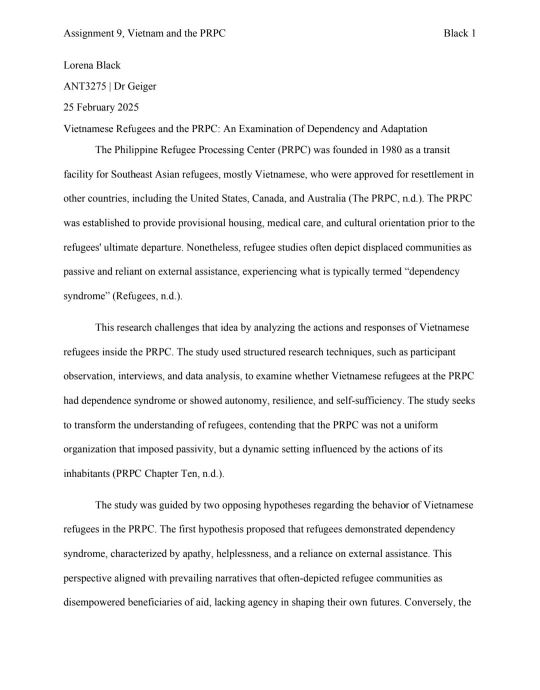
View On WordPress
#anthropologist#anthropology#culture#ethnographic#ethnography#observation#ramblings#refugees#shelter#social science#study#truth#walking#writing
0 notes
Text
Looking to build a career in BPM and CRM? 💡 Join Pega Training at Intellimindz and gain hands-on experience with expert-led sessions, real-time projects, and industry-relevant curriculum.
✅ Learn from certified trainers ✅ Work on live projects ✅ Get placement assistance ✅ Gain expertise in Pega PRPC
Take the first step toward a successful Pega career! 🌟 Enroll now and upskill with Intellimindz.
https://bit.ly/4gWN5cy

0 notes
Text
IOCL Grassroot Maleic Anhydride (MAH) Project Overview
IOCL Grassroot Maleic Anhydride (MAH) Project Overview & Updates Project Overview Owner: Indian Oil Corporation Limited (IOCL) Location Panipat Refinery & Petrochemical Complex (PRPC), Panipat, Haryana Type: Greenfield Maleic Anhydride (MAH) and Derivatives Plant Implementation Mode EPCM-based Execution Production Capacity Maleic Anhydride (MAH): 120,000 TPA 1,4-Butanediol (BDO): 20,000 TPA Tetrahydrofuran (THF): 16,000 TPA Key Components Process Units: MAH Unit, BDO & THF Unit Utilities & Offsite Facilities: Utility Boiler, ETP, Demineralization Unit, Cooling Tower Storage & Logistics: Storage Tanks, Loading Gantries, Dispatch Facilities Infrastructure: Substations, Control Rooms, Plant & Non-Plant Buildings
0 notes
Text
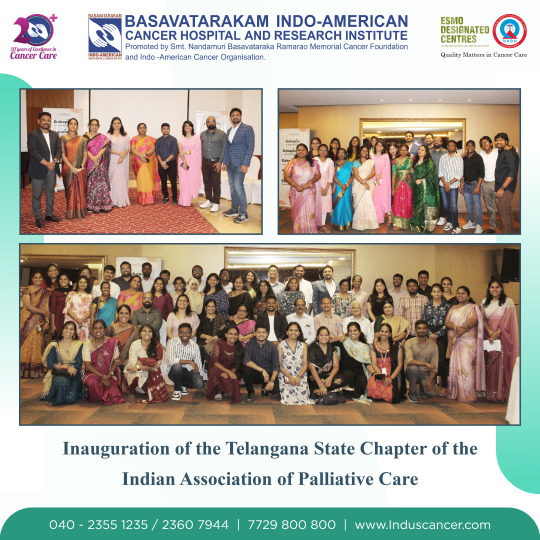

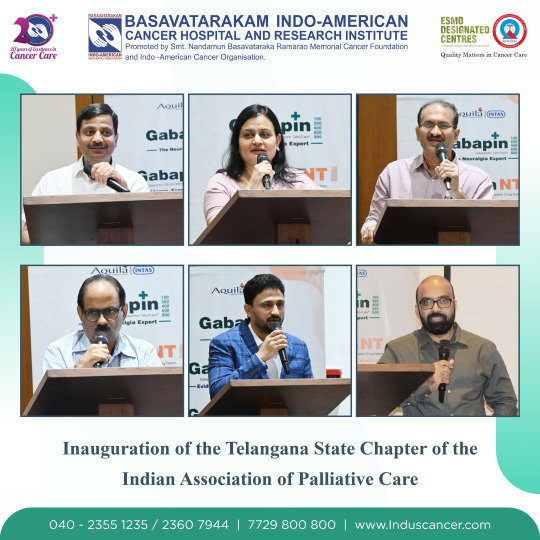
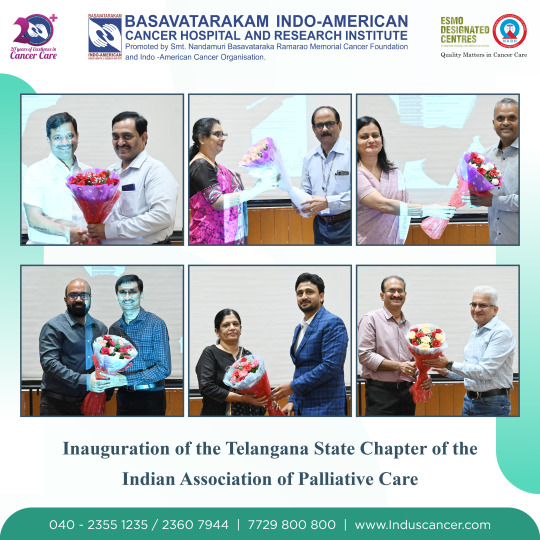
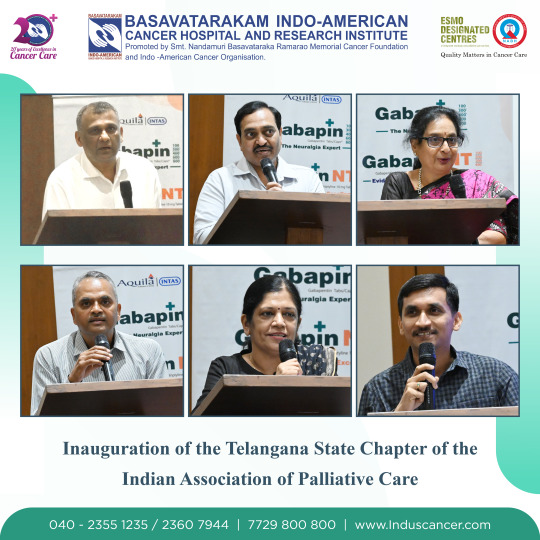
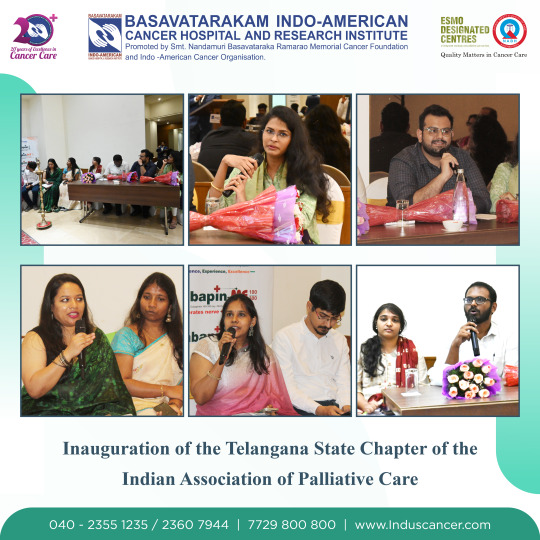

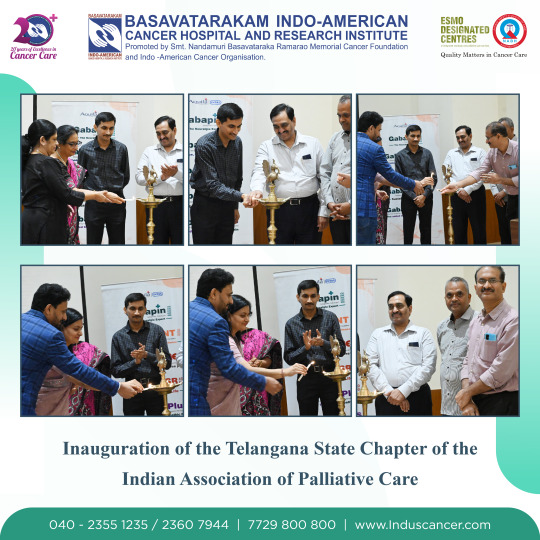
We are honored to have been part of the inauguration of the Telangana state chapter of the Indian Association of Palliative Care (IAPC), which took place on 29th June 2024 at the Radisson Blu Plaza Hotel in Banjara Hills, Hyderabad. Dr. K. Krishnaiah, CEO of our Basavatarakam Indo-American Cancer Hospital and Research Institute, Hyderabad, was one of the Chief Guests, contributing his valuable insights on the significance of palliative care. The event commenced with a warm welcome speech by our Consultant Incharge, Dept of Pain and Palliative Care, Dr. Praneeth Suvvari, who highlighted the objectives and future scope of the Telangana State Chapter. The dignitaries emphasized the history of palliative care in the state and the journey of various organizations, including MNJ, Sparsh Hospice, BIACHRI, and PRPCS, in setting up palliative care services. They underscored the significance of establishing the state chapter to integrate palliative services across Telangana and ensure access to pain relief medications for patients with terminal conditions. Dr. Tej Lohith Reddy, IAS inaugurated the logo of the Telangana State Chapter, marking a significant milestone in the development of palliative care in the region. Another momentous event during the inauguration ceremony was the election of the Governing Body for the Telangana State Chapter of IAPC. While Dr. Gayatri Palat was elected as the President of the committee, Dr. Praveen Kumar K, our Consultant, Dept of Pain and Palliative Care, was elected as the Honourary Secretary, and Dr. Anjaneyulu was elected as the Honourary Treasurer. The Committee Members for the Governing Body included Dr. BV Manjula, Ms. Priya, Dr. Praneeth, Ms. Shubha, Ms. Anusha, Mr. Eshwar, and Ms. Padma. A panel discussion on neuropathic pain. The panelists included Dr. Divya, Dr. Aakash, Dr. Arjun, Dr. Ravali, Dr. Pallavi, Dr. Sowmya, Dr. Archana, and Dr. Rituparno (DNB residents in Palliative Medicine, Basavatarakam Indo American Cancer Hospital & Research Institute and MNJ Cancer Hospital). We are committed to continuing our efforts in providing comprehensive palliative care and supporting those in need.
#basavatarakam hospital#best cancer hospital#best cancer treatment in india#best cancer hospitals in india#indo american cancer hospital#basavatarakamcancerhospital basavatarakam#basavatarakam#basavatarakam cancer hospital#indo american hospital#best cancer specialist in india
0 notes
Text

Prion protein (PrP) is a protein expressed in various organs and tissues throughout our body, but it is found in great abundance in the brain on the outer surface of the nerve cells, and for this reason also called PrP cellular or PrPC.
0 notes